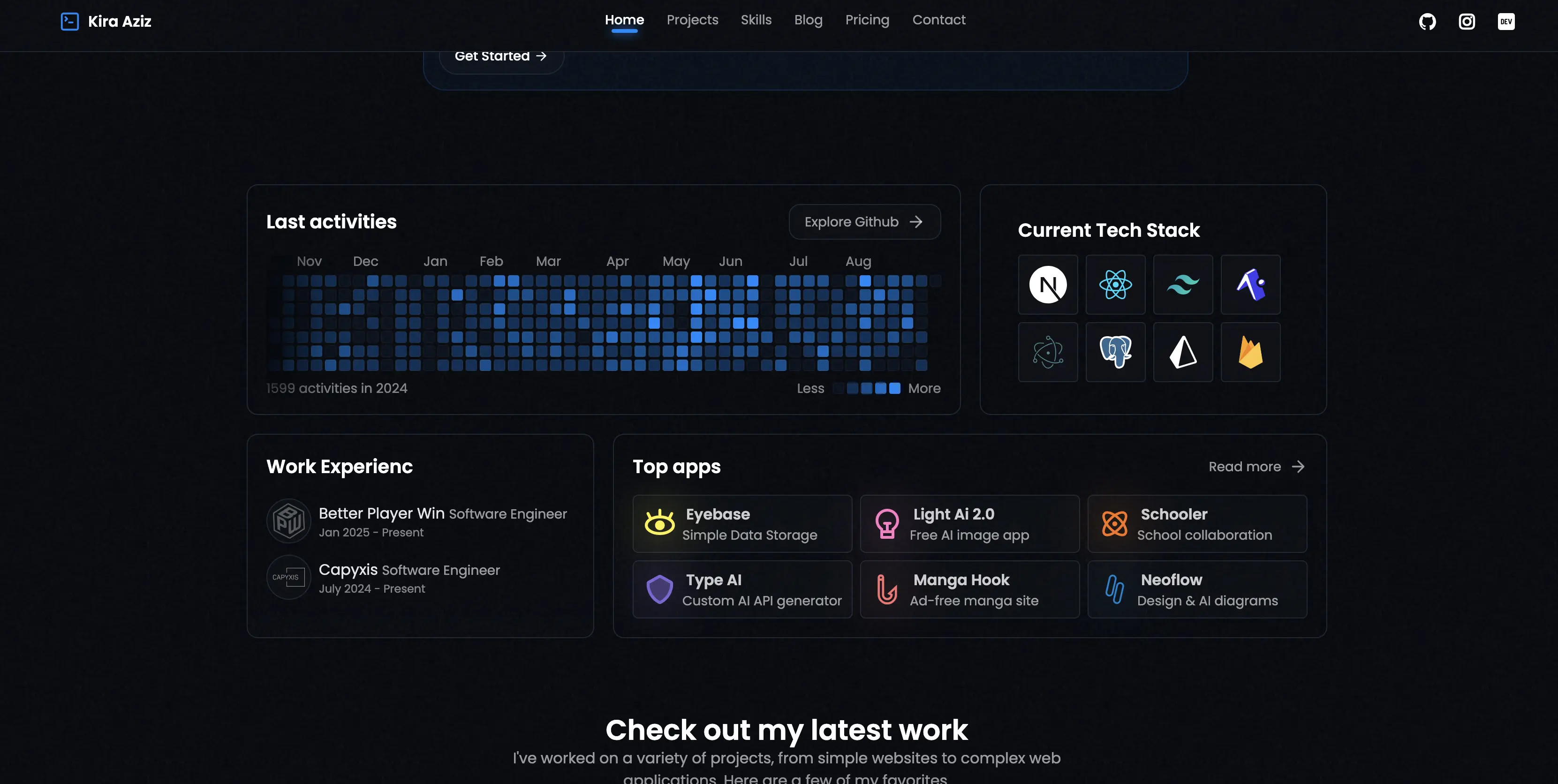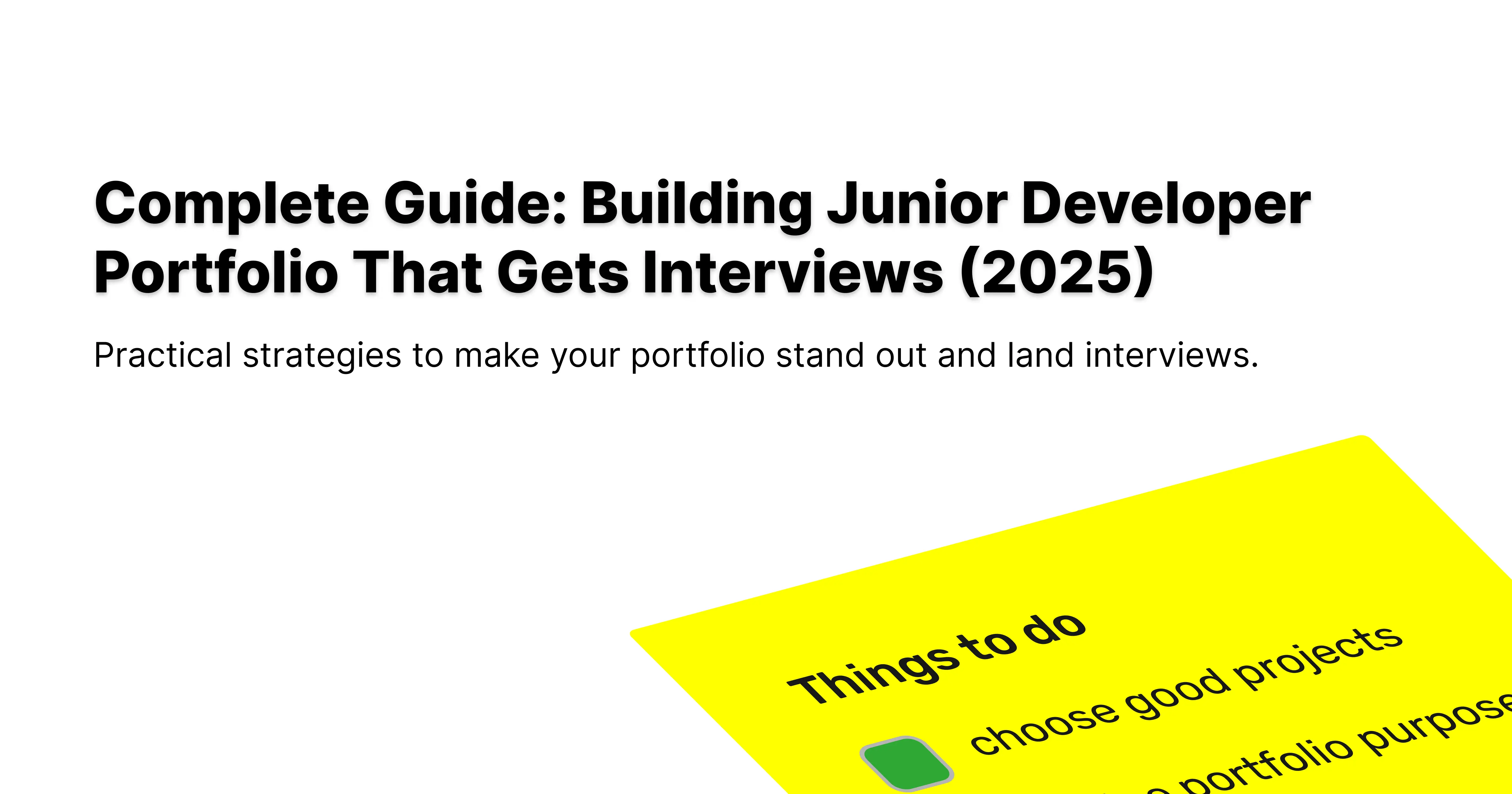Building a junior developer portfolio isn’t just about showcasing your work—it’s about getting interviews. In 2025, recruiters and hiring managers expect candidates to go beyond resumes and prove their skills through an online portfolio. This guide will show you how to structure a portfolio that grabs attention, highlights your strengths, and convinces employers you’re interview-ready.
If you’re curious how design choices influence first impressions, you may also enjoy exploring our breakdown of developer portfolio color palettes.
The Portfolio–Interview Connection
Your portfolio plays a central role in the hiring funnel. Here’s how it fits in:
- Resume stage: Applicant Tracking Systems (ATS) may filter keywords.
- Recruiter stage: They scan your resume, then click to your portfolio for proof.
- Portfolio stage: Employers review your top projects to decide if you’re worth interviewing.
- Interview stage: Hiring managers often keep your portfolio open during calls to guide questions.
Foundations: What Every Junior Portfolio Needs
At minimum, your portfolio should include:
- A credible About page with professional tone and contact info.
- 3–5 polished projects that demonstrate problem-solving and technical skills.
- Mobile-first design that recruiters can skim quickly.
- Signs of growth, like a “currently learning” section, open-source activity, or blog posts.
Choosing Projects That Land Interviews
The projects you highlight are the heart of your portfolio. Select them strategically:
- Job relevance: Pick projects aligned with the roles you’re applying to. If you want front-end roles, show React, not Python scripts.
- Collaboration: At least one project should reflect teamwork, since employers value communication as much as code.
- Real impact: Add numbers—“reduced load time by 40%” or “API serving 500 users.”
- Polish > quantity: Three standout projects are better than ten unfinished tutorials.
If you’re not sure what kinds of projects stand out, our breakdown of portfolio project ideas for developers offers inspiration across frontend, fullstack, and niche roles.
Structuring for Recruiter Attention (30-Second Test)
Recruiters skim fast. Your portfolio should communicate your identity, skills, and projects within half a minute. Focus on:
- Who you are
- What you do
- Key projects
- How to contact you
Structure your portfolio to make this effortless:
- Home page – Clear tagline and strongest project preview above the fold.
- Projects page – Case studies: problem → solution → tech → outcome → links.
- About page – Share your journey, motivations, and career goals.
- Contact page – Keep it simple: form, email, or professional profiles.
Try It Yourself: 30-Second Portfolio Preview
Experience a recruiter’s perspective with this interactive 30-second Portfolio Viewer. Click Start, explore a short page with a hero section, and project previews, and see how quickly your skills and value come across.
Quick Reflection
After using the viewer, consider what stood out immediately:
- Developer Identity – Name, tagline, and role.
- Experience & Affiliations – Years of experience or current company.
- Skills & Tech Stack – Key technologies visible at a glance.
- Project Highlights – Core projects and their impact.
- Navigation & Contact – Easy access to About, Projects, and Contact.
GitHub as a Professional Showcase
Even if you don’t have a standalone website, a professional GitHub profile can still land you interviews. Focus on:
- Keeping relevant repos public and pinned.
- Writing clear, detailed README files that explain the purpose, stack, and setup.
- Maintaining a tidy commit history (recruiters notice consistency).
- Hosting demos via GitHub Pages or Netlify for extra polish.
Highlight Your Contributions
A great way to visually showcase your activity and consistency is by including your GitHub contribution chart in your portfolio. Even if it’s not a full project, it shows recruiters your engagement and coding habits over time.
For example, here’s how Kira Aziz displays their GitHub activity directly in their portfolio:

Open Source & Side Contributions
Hiring managers love to see collaboration. Even small contributions make a difference:
- Add PRs for bug fixes or small features.
- Write documentation updates—clarity is valued.
- Highlight your role: “Fixed authentication bug” or “Implemented dark mode toggle.”

Screenshot of the open-source section of Banggi.dev in light and dark modes, showing a clean, well-organized layout with clear typography and highlighted contributions.
Content That Builds Trust (Blog, Case Studies, Learning Journey)
Your portfolio isn’t just about code—it’s about communication and thought process. Employers want to know how you think. Adding content like:
- Blog posts explaining solutions or tools you’ve explored.
- Case studies breaking down how you approached a project.
- A learning roadmap, showing what you’re currently working on.
SEO & Accessibility: Getting Found & Remembered
Recruiters often Google candidates—make sure your portfolio is easy to find and easy to use.
- SEO keywords: Use terms like “junior developer portfolio” or “entry-level web developer projects.”
- Meta descriptions & tags: Helps with search visibility.
- Accessibility: Use alt text, proper headings, and readable color contrasts.
- Responsive design: Your portfolio must shine on both desktop and mobile.
<head>
<title>Jane Doe – Junior Developer Portfolio</title>
<meta
name="description"
content="Jane Doe’s junior developer portfolio highlights essential projects and skills, making her a strong candidate for entry-level web development roles."
/>
<meta
name="keywords"
content="Jane Doe, junior developer portfolio, entry-level developer portfolio, web development projects"
/>
</head>
Avoid These Common Mistakes
- Unfinished/Template Projects: Only showcase work you own and can explain.
- Over-complicated Design: Fancy animations or hidden menus frustrate recruiters.
- No Narrative: Don’t just post screenshots—reveal your thought process.
- Ignored Accessibility: A non-accessible site narrows your audience, including recruiters with visual preferences.
Conclusion:
Your portfolio is the most powerful way to prove your skills beyond a resume. By focusing on relevant projects, clear structure, thoughtful content, and recruiter-friendly design, you create more than a showcase—you create a tool that gets you in the interview room. Keep it updated, keep it polished, and most importantly, make it reflect the kind of developer you want to become.
Every detail—whether it’s how you explain a project, how you structure your navigation, or how accessible your design is—tells employers something about your professionalism.
For more inspiration, explore our curated developer portfolio examples and notice how small design decisions can completely change how a portfolio is perceived.
